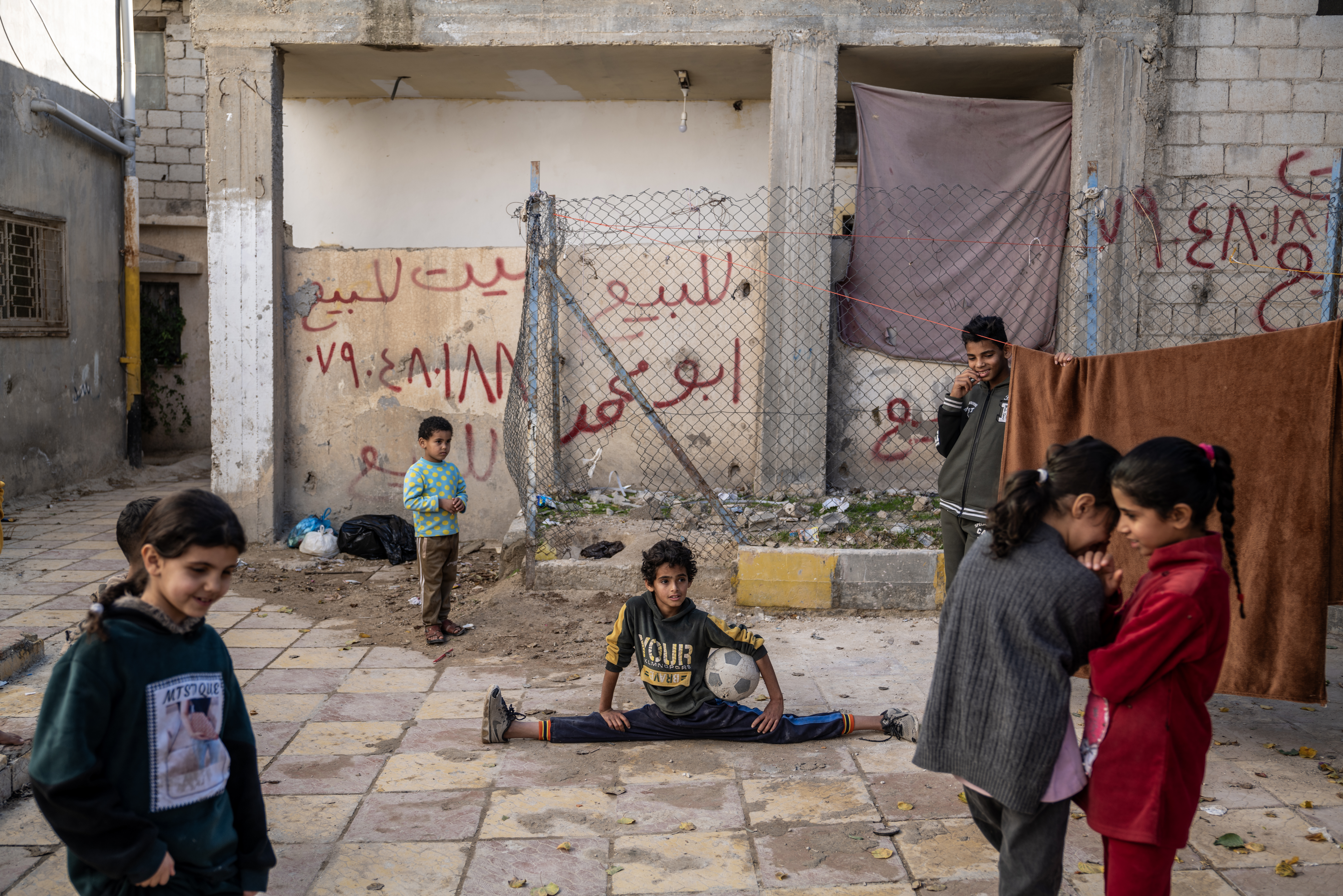The ebb and flow of the Israeli-Palestinian conflict has always been very present in Jordan, where one of every five of its inhabitants is a Palestinian. Of these 2.3 million registered Palestinian refugees in Jordan, most have obtained Jordanian citizenship and are an integral part of the social fabric of the kingdom, but a considerable number live in the same 13 refugee camps that were set up in Jordan during the 1948 Arab-Israeli war and the Six-Day War in 1967.
Last November, motivated by a desire to better understand the root causes of this intractable conflict from a Palestinian perspective, I spent two weeks visiting all 13 camps in Jordan, documenting the life and stories of Palestinian refugees living there. The photo essay that I produced was published as a portfolio in the year-end issue of The New York Times Magazine.
These refugee camps look different today than when they were established by the United Nations. Over the past several decades, the flappy tents in dusty empty fields evolved into homes with mud walls with zinc roofs and later into concrete buildings built along narrow alleys. Today, all but three of the camps continue to be administered by the United Nations Relief and Work Agency for Palestine Refugees (UNWRA), the agency created to help those “who lost both home and means of livelihood as a result of the 1948 War.” Many of the camps resemble concrete jungles attached to towns and cities across Jordan, in some instances making it hard to delineate where the camp ends and the city begins.
Such is the case of the Talbieh Camp where I took this photograph. Established in 1968, Talbieh is located about 35 kilometers south of Amman. According to UNWRA, the camp currently houses about 10,600 people. The narrow alley's between the houses in the camp were full of life. Children on their way from school balanced plates of hummus to take home for lunch, while old men and women sat in front of their homes drinking tea. The doors of most homes were left open, and in some streets, chickens could be seen coming in and out of houses under curtains separating the living spaces from the street.
Off one of the camp alleyways, the distant sound of children playing caught my attention so I walked toward it. In a makeshift playground surrounded by walls covered in spray-painted notices of houses for sale, a group of children was jumping rope and playing soccer. One of the boys noticed me and decided to show off his flexibility by performing a perfect leg split, while the girls giggled in the foreground. These children were born in the camp as refugees, and so were most of their parents. This scene to me represented the multi-generational dimension of the Palestinian experience in Jordan.
As I made my way through the camp many people invited me into their homes for tea and a chat. Old men were curious about where I was from, and they were eager to share their family stories and faint memories of life in Palestine. In most of the homes the television was on, showing around-the-clock news about the horrors in Gaza. Old family photos were framed on the walls, grainy photographs of grandfathers and great-grandfathers in full Arab regalia, taken in their homes in Palestine. Their testimonies hinted at a common experience in the camp, that of being trapped in indefinite exile, and the lingering psychological effects of living as a refugee, which were magnified by the powerlessness they felt while watching the events in Gaza from afar.
There was a certain continuity of experiences between these refugee communities in Jordan, and their brethren in Gaza and the West Bank, one marked by decades of displacement and loss. But I also found these camps filled with life and energy. Men gathered in coffee shops to play cards, children went to school, and the smell of fresh bread filled the air near the bakeries across the camp. It was in stark contrast to the death and destruction in the images that have come to define the conflict in Gaza.




